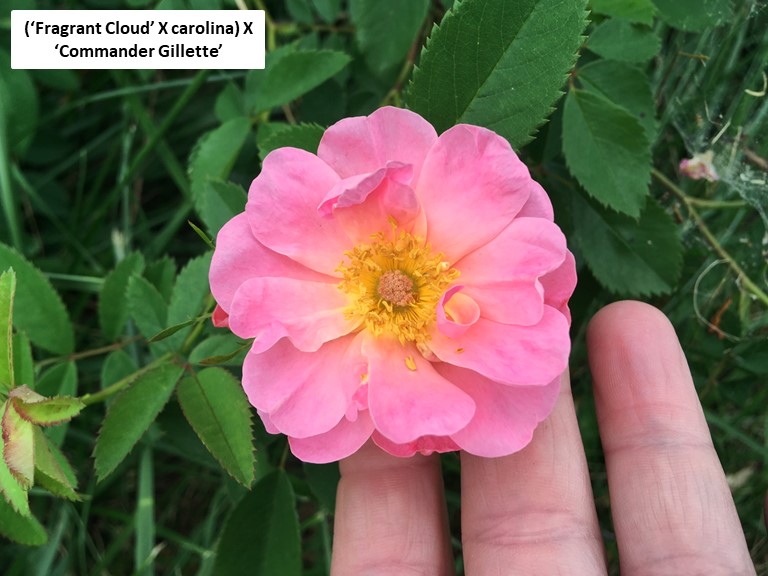Well, that first bloom finally opened today…
not single after all, a little bigger and darker than ‘Commander Gillette’ too.
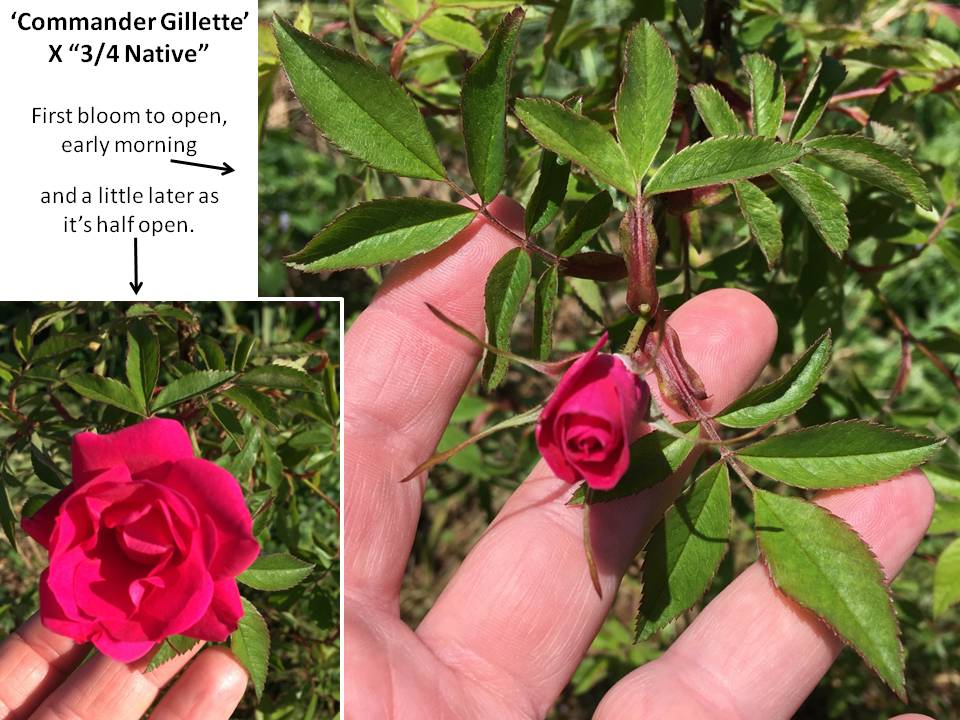
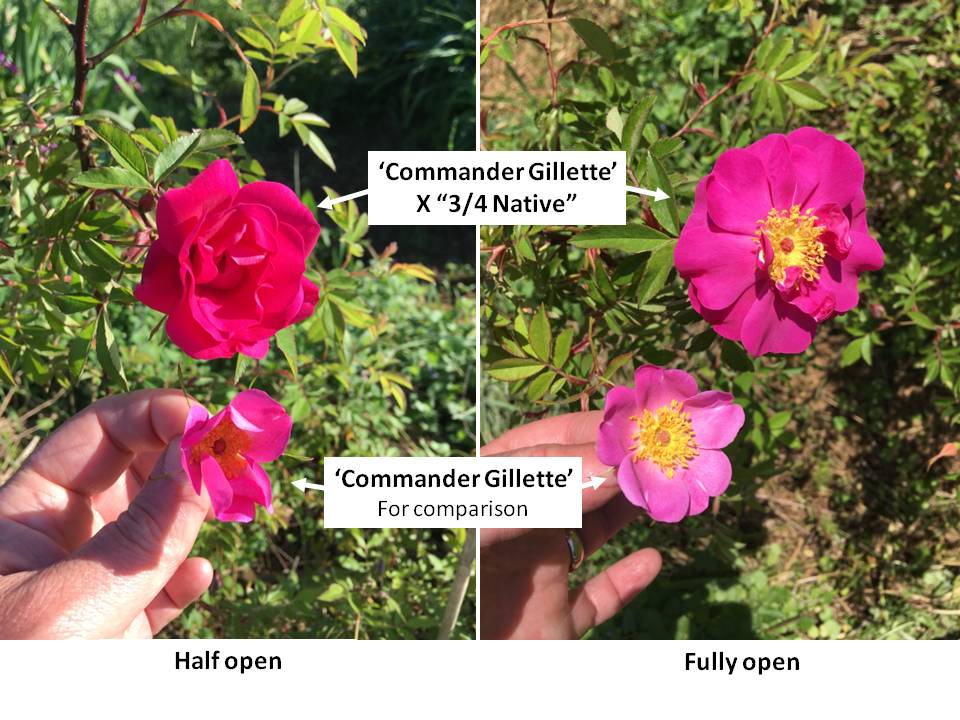
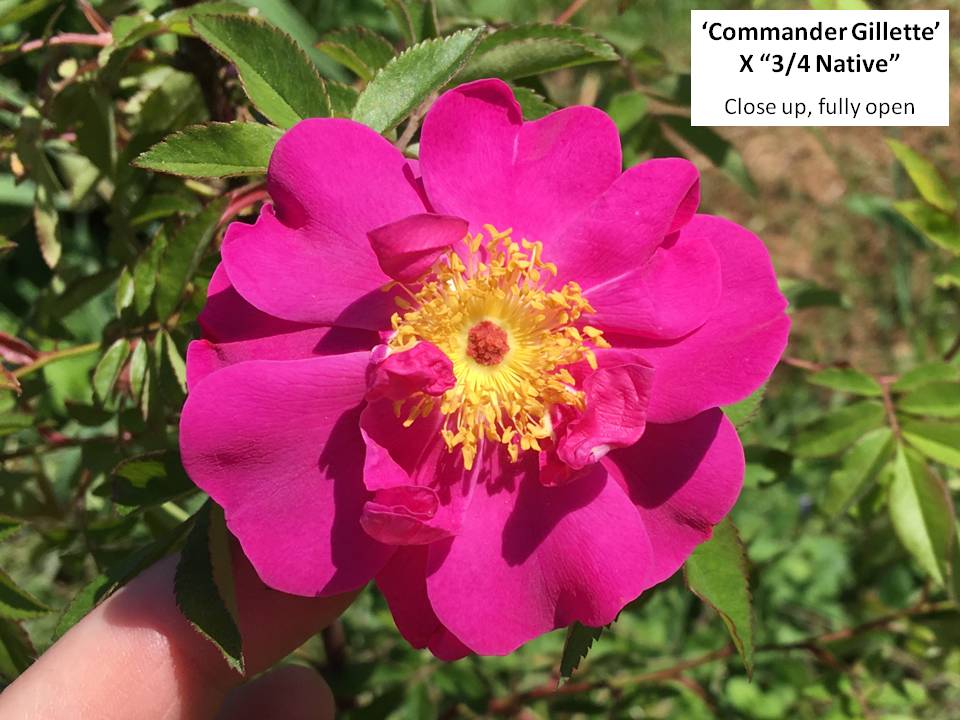
I’ve always liked ones with red stigma pads. ![]()
Congratulations! CG/Legacy/Basye’s Thornless, et. al, characteristically produces weak seedlings when used for seed. To successfully raise something from its seed that appears not to be a self is an accomplishment!
Thanks Kim! I figured that you, of all people, might appreciate seeing this, since you know very well firsthand how CG/Legacy/Thornless behaves as a parent.
Now the question is, will this seedling produce any repeat bloomers in crosses with moderns? Guess I’ll have to try some of its pollen on ‘Winter Sun’ which is going to be opening soon. ‘Winter Sun’ was very accepting of ‘Commander Gillette’ pollen.
You’re welcome! Yes, you’ll eventually obtain repeat, but you might also lose quite a bit of what you’re hoping to retain.
Good point Kim, I just used Basye’s Blueberry pollen on it instead. That way maybe I can get repeat bloom and preserve a lot of the native influence.
Oh and by the way, I stand corrected. Previously in this thread, I’d said, “that reminds me… before Fragrant Cloud x carolina died from RRD, I did one last cross on it. I used ‘Commander Gillette’ pollen. I’ve got two seedlings – a double (with smaller flowers) the same color as the mama, and a single that’s a little bit darker.”
Apparently, I hadn’t noticed that there was still a third seedling from that cross, hiding between those other two. This third seedling is a darker double. I like it a lot more than the other double.
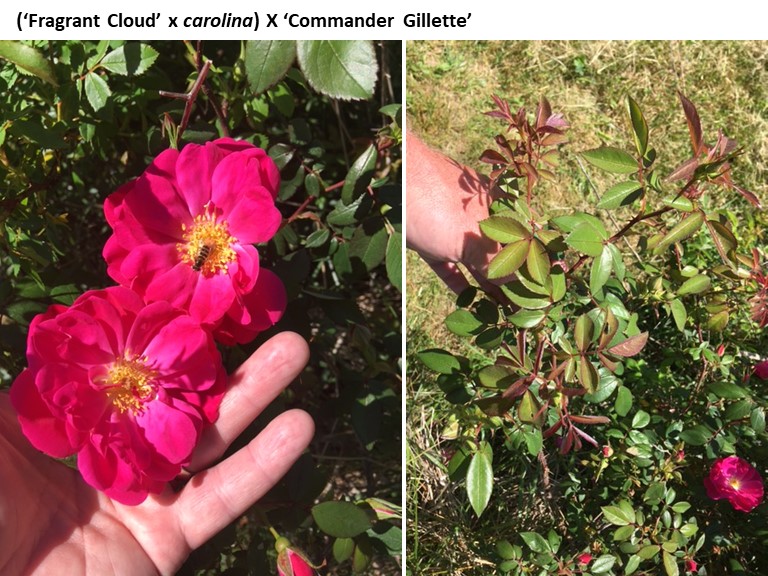
And although it’s only somewhat related to this thread… while I’m here, I’ll post two other interesting newly blooming seedlings that have significant North American species ancestry.
complex.JPG
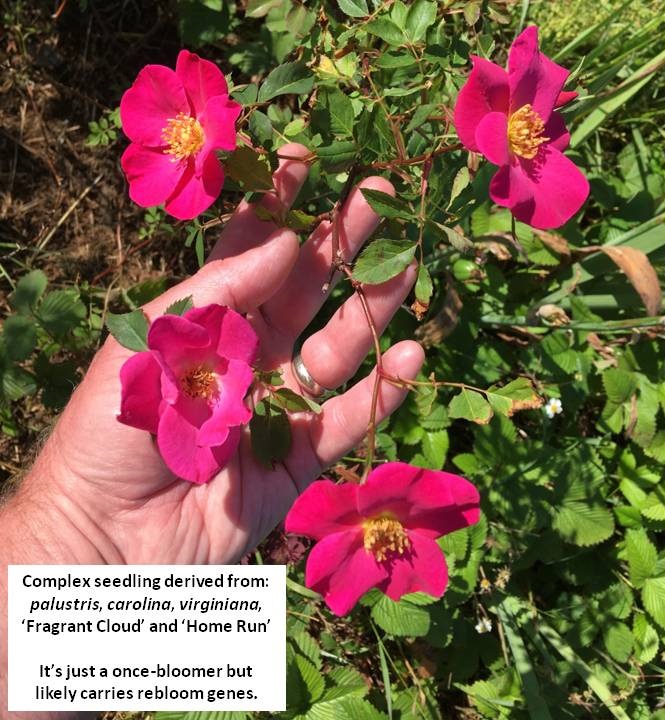
Marvelous! Congratulations! The only thing I really regret the Basye stuff doing is how likely they are to rust. But, that’s an American species trait. Nature uses it to tell them when to shut down for the winter. I don’t think we’re going to be able to break that instruction.
That’s good to know, Kim. With all the disease pressure we have here that’s one thing I hardly ever see - rust.
I think I may have noticed my first single lesion of it a week ago. And I mean first time EVER, that I’ve seen it. ![]()
I wasn’t even sure if it WAS rust or not, but it was orange and sure looked like other rust fungus I’ve seen on plants.
Do you know of any species that are especially good for producing rust-free offspring when paired with the native “rust buckets”?
Species? No sir. Rugosa rusts. Minutifolia and Stellata mirifica don’t rust. They go dormant in dry and don’t need to shut down for cold, or the dry shuts them down. Nutkana, Woodsii, Carolina, Virginiana and all the others I’ve messed with, rust. Oh, Serafinii, Californica and Spithamea haven’t rusted for me…YET and Fedtschenkoana only black spots, no rust.
Wish I’d had a flower of the virginiana pollen parent of “3/4 Native” to include too, but I thought a comparison picture of these might be fun anyway…
I didn’t realize until they were side by side, that the seedling up top actually ended up darker than both parents.
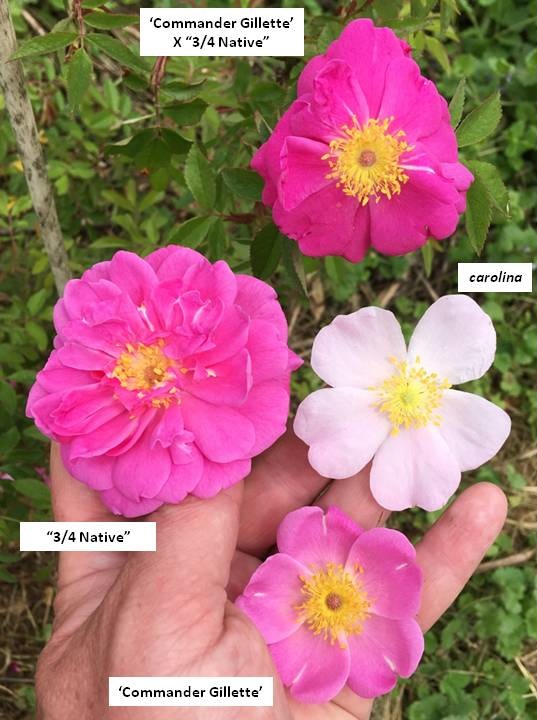
To add to the list: R. setigera, rust.
Add mildew to some setigera. Those from David Z, at the U of MN arboretum location didn’t mildew, but my line which derived from one at K-State, acquired decades ago, mildewed itself maybe to death after overwintering as rooted cuttings while the others stayed clean. I guess the same will be true of rust on setigera and others. Kim had kindly sent me some cuttings over winter so I could get a good dose of rust on anything I want. But no signs of transfer to setigera within 6 inches in a fairly confined space optimized for mildew.
No mildew on my setigera in a very cool first half of the growing season, when many others have gotten it pretty badly, and it shook off the rust for now. Across the garden path, where it’s much shadier, mildew on Darlow’s Enigma and Erinnerung an Brod (a setigera offspring) but no rust…
Didn’t figure it warranted a whole new thread so I’m adding this picture here. It’s another of the native blend seedlings that I like.
It’s once blooming and the flower is sort of small but is almost thornless and has a warm yellow tint especially in the center.
